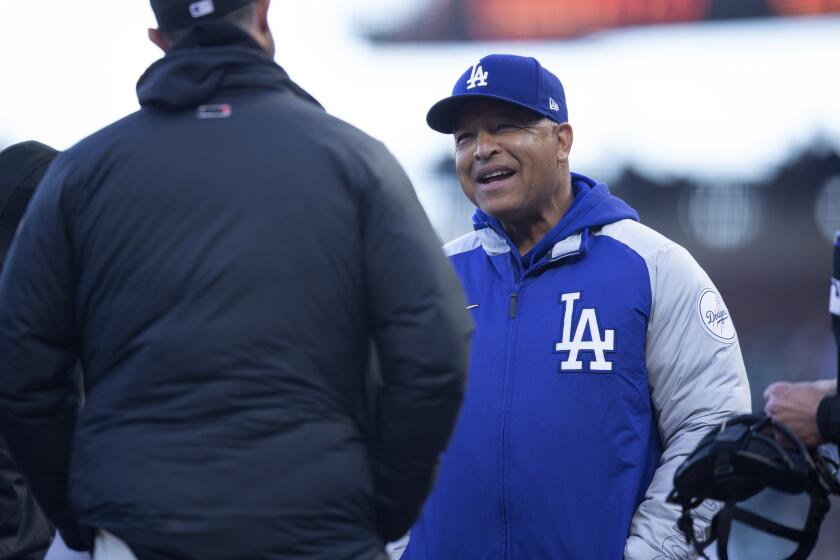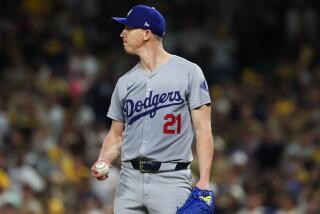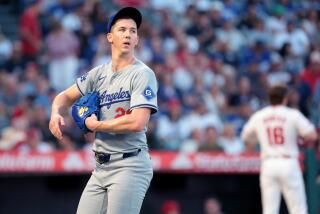As velocity goes up and up, it might be time for MLB pitchers to knuckle down
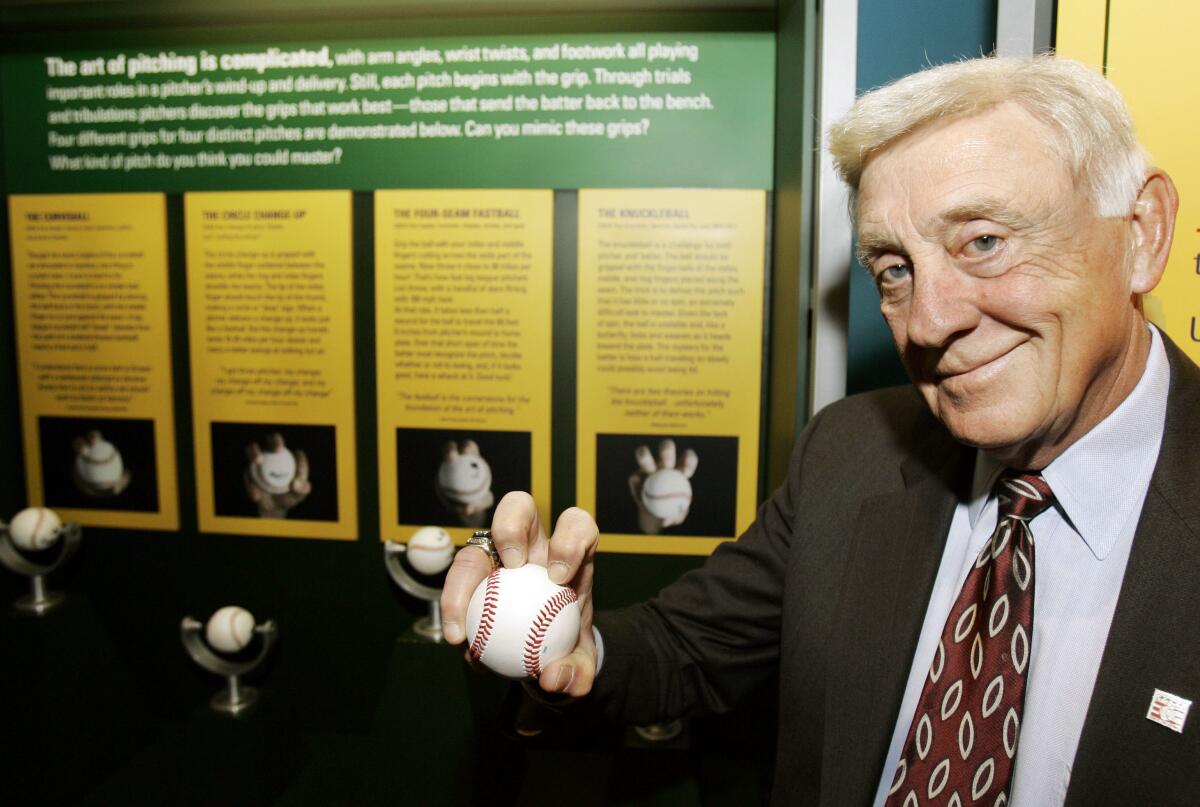
- Share via
Chris Nowlin would love to teach you how to throw a knuckleball. He runs his “Knuckleball Academy” out of a baseball training facility 10 blocks south of Los Angeles International Airport. He aspires to open his own facility, and he has an investor interested, but there is a bug in the business model.
“There doesn’t seem to be a whole lot of demand for the knuckleball in Los Angeles,” Nowlin said.
Phil Niekro and Hoyt Wilhelm rode their knuckleballs to the Hall of Fame. Charlie Hough and Tom Candiotti delighted Dodgers fans and frustrated opposing batters with knucklers. In 2004, when the Boston Red Sox won their first World Series in 86 years, knuckleballer Tim Wakefield was their Game 1 starter.
After a Cardinals pitcher had to change his cap because it was sticky, Dave Roberts discusses the widespread use of substances that enhance grip.
The knuckleball pitcher has vanished from the major leagues, an artifact like paper tickets and contact hitters. Of the 617 men to throw a pitch in the majors this season through Wednesday, according to Fangraphs, only four have thrown a knuckleball — and all four were position players.
There doesn’t seem to be a whole lot of demand for the knuckleball anywhere, but perhaps there should be. In an era where pitchers are trained to throw harder than ever, and hitters are trained to react accordingly, there ought to be a competitive advantage for a knuckleballer, throwing a pitch that Hall of Famer Willie Stargell compared to “a butterfly with hiccups.”
“I think a good knuckleballer is going to be successful in any generation,” said Orel Hershiser, the Dodgers’ broadcaster and former Cy Young Award winner.
In this generation, the art of pitching has evolved from making batters mis-hit the ball to making batters miss the ball entirely. The art of hitting has evolved into big swings, with strikeouts considered more of a side effect than an actual problem.
Velocity is king, a 100 mph fastball is no longer a special event, and even so-called “off-speed” pitches are fast balls. According to Baseball Savant, 22 pitchers this season average at least 90 mph on their changeups, 14 on their sliders.
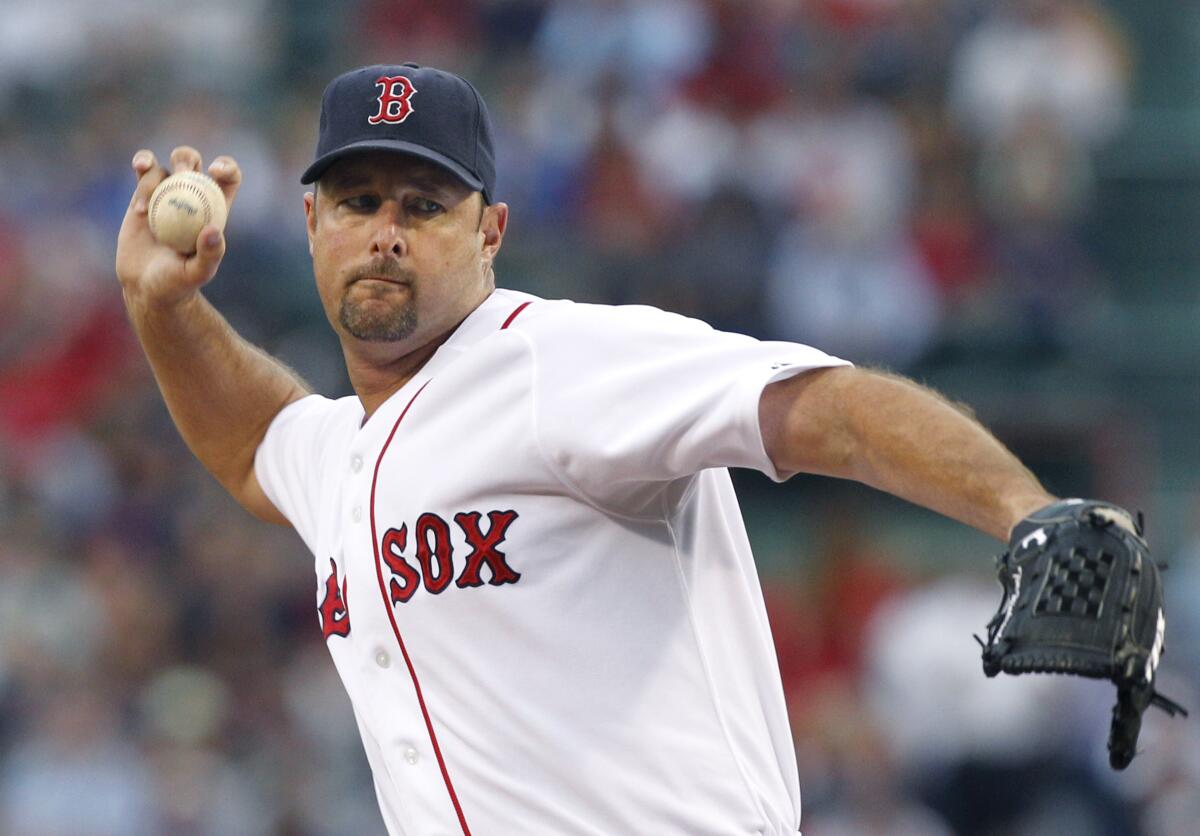
Farhan Zaidi, president of baseball operations for the San Francisco Giants, noted “how alarmingly easy it is for big league hitters to square up a 100 mph fastball, if it’s not located well. Hitting is largely about rhythm and timing. A hitter’s timing has evolved to where it’s not an issue to catch up to that kind of velocity.”
It stands to reason, then, that a hitter attuned to facing pitches at 90-100 mph might struggle against a knuckleball. Wakefield threw his at 66 mph, and the knuckleball floats so unpredictably that former Pittsburgh Pirates infielder Richie Hebner once compared trying to hit one to “eating soup with a fork.”
Said Zaidi: “There’s probably a little bit of zagging to be done here. People might need to start thinking more about how to disrupt a hitter’s timing and not just continue on this path to optimizing pitch characteristics in terms of velocity and movement.”
Velocity also is a risk factor for injury.
“The fastball is the most stressful pitch,” said former Dodgers athletic trainer Stan Conte, who now runs an injury analytics firm. “There’s no question about that.”
“If we could get someone who could go one time through the lineup with a knuckleball and actually command it well enough to do that, I’m in.”
— Andrew Friedman, Dodgers president of baseball operations
The knuckleball puts little stress on the arm, largely because a good knuckleball is pushed more than thrown. Conte said the risk of Tommy John surgery, in which a torn ulnar collateral ligament is reconstructed, would be eliminated in a pure knuckleballer.
“Definitely, you’re not going to see any UCLs [surgeries],” Conte said. “You don’t need your ligament to throw a knuckleball.”
R.A. Dickey, the only knuckleballer to win a Cy Young award, was born without a UCL in his pitching elbow.
“I had Tommy John surgery,” Candiotti said, “but that was before I threw a knuckleball.”
The average starting pitcher this season goes five innings. Candiotti, a broadcaster for the Arizona Diamondbacks, said teams might appreciate knuckleballers now more than ever.
“Besides how they can mess up a guy’s timing,” Candiotti said, “they’re such an inning saver.”
Less fatigue on the arm means knuckleball pitchers can throw more innings, more often. In the modern era, Niekro is the career leader in innings pitched. In 1993, when he was 45, Hough pitched 204 innings for the expansion Florida Marlins.
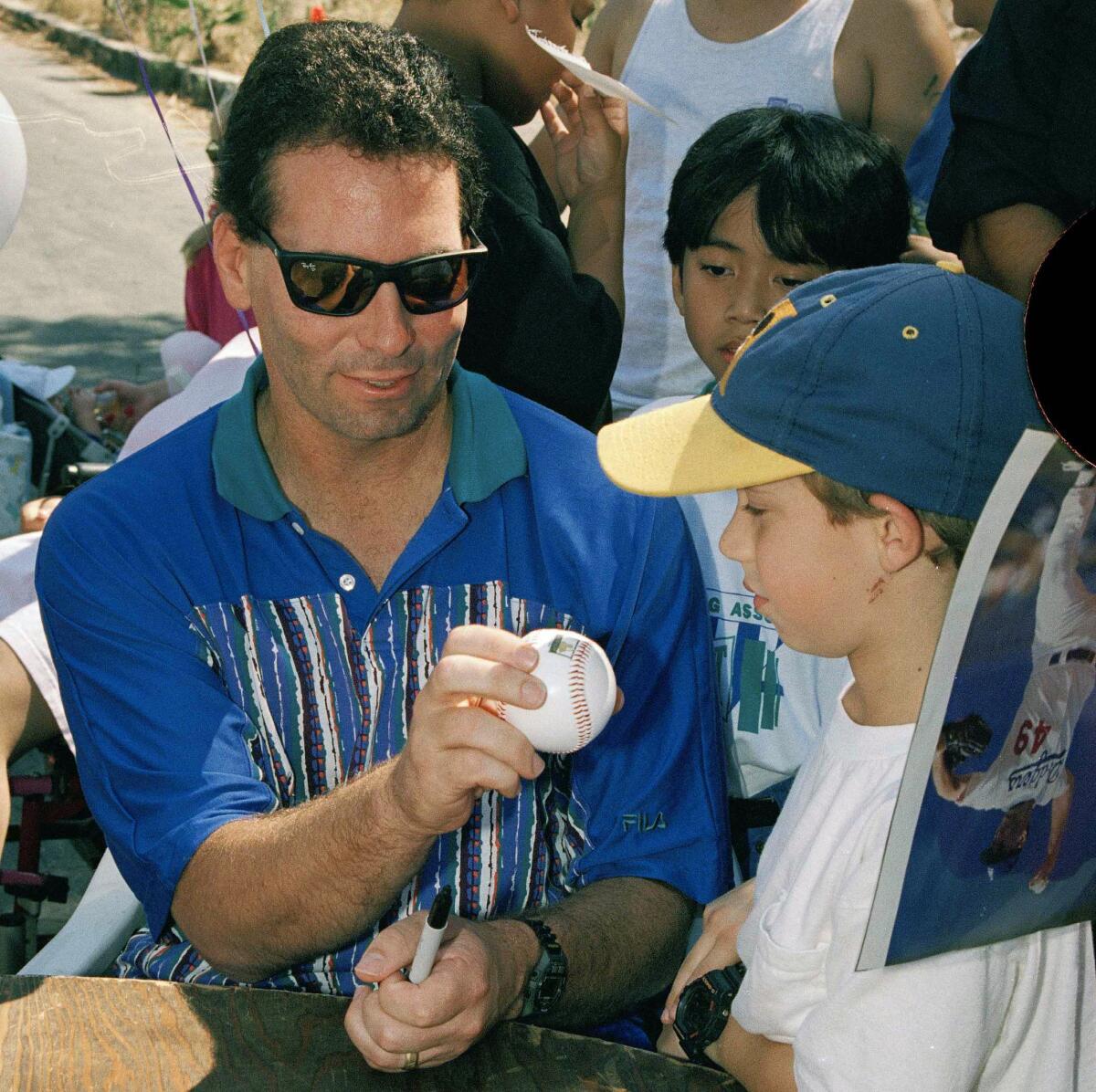
Candiotti talked about the comfort in knowing the starter could go seven or eight innings. In today’s game, however, Nowlin believes he has a better idea for a knuckleballer.
“I think it would be devastating as an opener,” Nowlin said. “I know, in the independent league games I pitch, the guy that comes in from the bullpen after me commonly strikes out the side.
“The knuckleball hangover is very real.”
Said Candiotti: “That’s a great idea. You could probably do that three or four days a week, at least.”
The Dodgers happily would reserve a spot on their roster for such a pitcher.
“If we could get someone who could go one time through the lineup with a knuckleball and actually command it well enough to do that, I’m in,” said Andrew Friedman, the Dodgers’ president of baseball operations.
When the Texas Rangers converted Dickey into a knuckleball pitcher, Hershiser was their pitching coach.
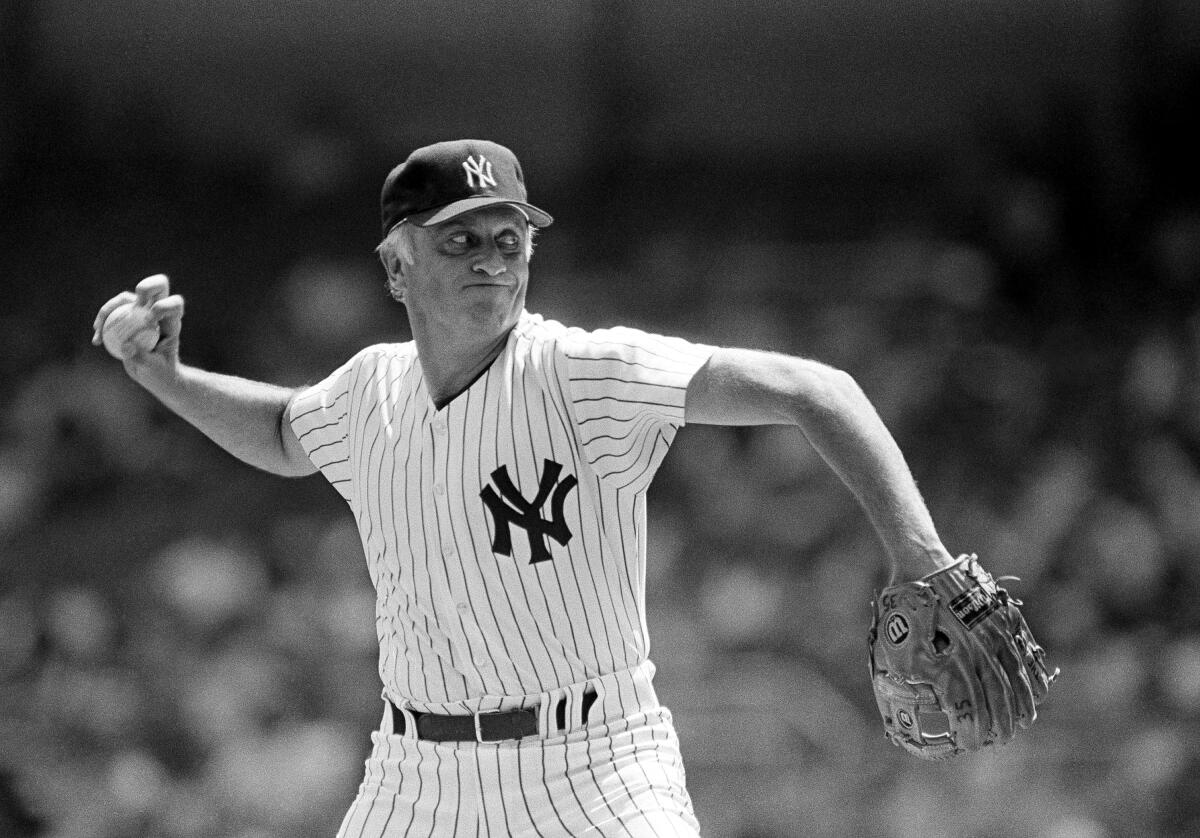
“It’s a fun pitch for everybody on the whole team to play around with, when they’re playing catch,” Hershiser said.
“They’ll all say they’ve got a good knuckleball. Maybe one out of three will be good. But those other two would be getting crushed, and they probably wouldn’t be strikes, because they would have to do it down a mound.”
He believes a good knuckleballer would prosper today, if teams could find one.
“It’s a very hard pitch to learn,” Hershiser said. “I could take 10 of the very best athletes in the world and say, ‘I’ll put you with the knuckleball experts from the past.’
“I would say, out of those 10 athletes, I’m not sure you’d even get one. And those would be world-class athletes.”
Niekro’s nephew, Lance, briefly reached the major leagues, as a first baseman. He tried to reinvent himself as a knuckleball pitcher, but he was unsuccessful, even with tutoring from his Hall of Fame uncle.
With the Dodgers, Friedman has tried a “speed camp” to develop pinch runners and a “velocity camp,” in which a group of unheralded minor league pitchers were dispatched to Driveline to accelerate their fastballs.
“We had a knuckleball camp with the [Tampa Bay] Rays, trying to create them,” Friedman said. “We signed guys and had Charlie Hough work with them.

A look a some of the knuckleballs Phil Niekro threw during his stellar MLB career.
“There are so few people on Planet Earth that could actually do it — way fewer than guys who could throw 100. The feel required for it, I think, is almost a more difficult skill.”
How about knuckleball camp, version 2.0?
“If we had any reason to believe that it would be successful,” Friedman said, “I’d do it in a second.”
In 1992, Los Angeles Times columnist Jim Murray described the pitch this way: “It’s the knuckleball, that eccentric nonpitch that is to baseball what the phantom was to the opera. You know it’s there; you can’t find it.”
The batters can’t find it, but baseball should. If 600 guys can throw a major league pitch, one of them should be able to throw a good knuckleball.
More to Read
Are you a true-blue fan?
Get our Dodgers Dugout newsletter for insights, news and much more.
You may occasionally receive promotional content from the Los Angeles Times.

